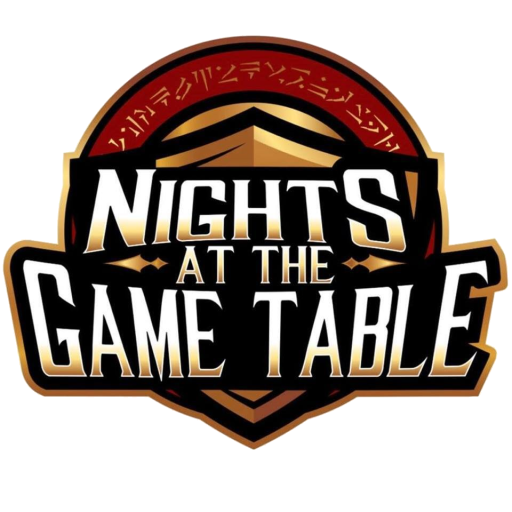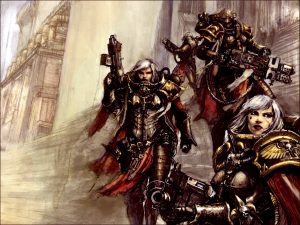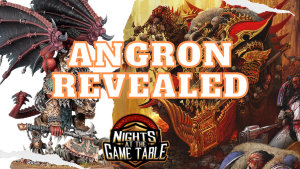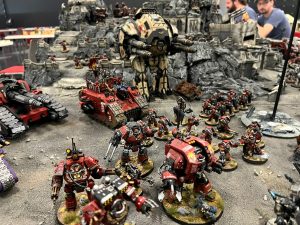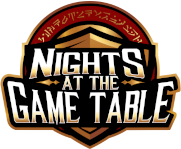This is your complete guide to Aeldari Lore Warhammer 40k! The Eldar, sometimes known as the Aeldari god (the title used before their race fell), are an ancient race of elf-like humanoids.
The Aeldari once ruled the galaxy, but the Aeldari are now a dying race. The Aeldari lost their major homeworlds after the Fall of the Dark Eldar, and are now dispersed over the stars and webway on an unexpected journey, divided into many groups and allegiances.
The Asuryani live in Craftworlds, which are planetoid-sized ships. The Drukhari live in Commoragh, an ancient city within the Webway.
The Exodites live on lush Maiden Worlds, while the rest of the Aeldari factions live as outcasts, renegades, corsairs, and pirates known as Anhrathe, and there are countless more tribes and sub-groups scattered around the galaxy.
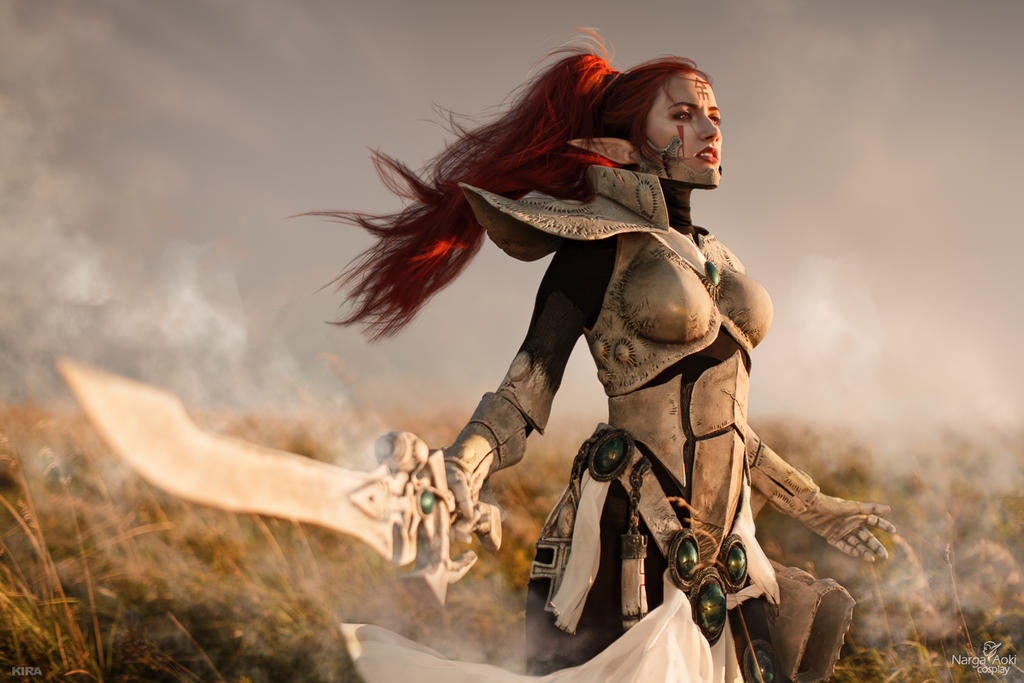
Contents
1 – BACKGROUND
1.1 – BIOLOGY
1.2 – HISTORY
1.3 – RELIGION
2 – TECHNOLOGY
3 – SOCIETY
3.1 – CRAFTWORLD ELDAR
3.2 – EXODITES
3.3 – HARLEQUINS
3.4 – OUTCASTS AND PIRATES
3.5 – YNNARI
3.6 – CHAOS ELDAR
4 – THE ELDAR GENDERS
5 – THE ELDAR PATHS
6 – NOTABLE AELDARI
7 – ETYMOLOGY AND INSPIRATION
Background
Biology
On the surface in the warhammer age, the Eldar resemble humans, albeit the Aeldari are taller, slimmer, and have sharper features and pointed ears. The Aeldari have a long life span compared to humans, and most will live for over a thousand years unless Aeldari die of disease or accident.
Eldar also have far quicker metabolic rates than humans, as well as more advanced heart and neurological systems.
When compared to humans, these characteristics are manifested in their substantially increased reflexes and agility.
Humans appear to move in slow motion and with some clumsiness to them, whereas the Eldar can move with distracting grace and be blindingly swift in combat.
Aeldari have a high amount of psychic ability as a race, which is used to build their technology. Eldar that actively cultivate their psyker potential appear to have a significantly longer lifespan, one that is commensurate to their prowess. The Eldar Farseers have a lifespan of many thousand years.
Eldar are psychologically superior to humans and feel all emotions considerably more intensely, necessitating constant restraint on the part of the Eldar to avoid mental breakdown.
Eldar appear to reproduce in phases, with the father gradually adding new genetic material to the growing embryo. Eldar autopsies are suggestive of this procedure, which is unknown. The Eldar gestation period, on the other hand, is substantially longer than that of most other races.
History
The extant Eldar are primarily a refugee community, the strewn remnants of their former might and prowess.
Even in such dire conditions, Aeldari remain a formidable force in the galaxy. Ten thousand years ago, the Eldar were one of the galaxy’s most powerful and dominant races, controlling a large chunk of the galaxy and living comfortably.
Other races with superior technology and military might existed, but none were in a position to significantly challenge the Eldar nation. When it arrived, it was an internal disaster.
With no need for meaningful effort or labor, the Eldar became consumed by conceit and began to follow any curiosity or desire. Cults devoted to exotic knowledge, sensual pleasure, and increasingly outlandish entertainment arose quickly. Many Eldar quickly followed a darker road, sinking into dark study, rapid gratification, and unfettered violence, ushering in the Fall of the Eldar.
Many Eldar were disturbed by their friends’ conduct, and the wisest of the Seers warned that the route could only lead to evil. Disgusted, some Eldar fled the Empire’s center worlds for the outlying areas, while others stayed to try to change the course their race had chosen.
While this would have been disastrous for any culture, it was especially so for the Eldar. The mental emanations of these actions began to collect within the parallel domain of the Warp, bolstered by the souls of departed followers and cultists.
As the Eldar vices increased in number, so did this collection, until it took on a life of its own. The psychic scream of its birth tore the souls from all the Eldar within a thousand light years of it, and it rose to consciousness as Slaanesh enemy forces, Devourer of Souls and doom to the Eldar in the warhammer age
Its reawakening was so powerful that it ripped a rift between physical space and the Warp, trapping the Eldar homeworlds in a state of half existence. This area is now known as the Eye of Terror, and the forces of Chaos now call it home. Many Eldar survived the Fall and are enslaved to Slaanesh, trapped behind the Eye on the Eldar’s homeworlds, the Crone World.
The Eldar have been a shattered and scattered people without cohesion and purpose since this moment, which is known only as The Fall. Eldar numbers are dropping all the time.
The Great Rift nearly split the galaxy in half near the end of the 41st Millennium. It was known as the Dathedian to the Eldar empire, and as a highly psychically attuned race, the Aeldari were the ones who were most affected by the aetheric phenomena that accompanied it.
The creation of the Ynnari, the enormous Dysjunction of Commorragh, the shattering of the Shattering of Biel-Tan, and the Psychic Awakening were among the numerous changes for the Eldar empire.
Religion
The Eldar are renowned to be a spiritual race, and their mythic cycles are central to their culture. The War in Heaven was the most renowned of these cycles, an epic fight between the Eldar deities led by Vaul, the god of the forge, and Kaela Mensha Khaine, the god of war, in two groups.
The Eldar Pantheon is thought to have been annihilated by Slaanesh’s birth, with two significant exceptions. While the Eldar still adore all gods and keep their stories alive in legendary cycles, Aeldari no longer seek their assistance or hope for their intervention.
Still, a prophesy describes the Eldar gods’ return and how Aeldari will fight and kill Slaanesh as a unified pantheon. It remains to be seen whether this is more than a legend.

Technology
- The conventional Shuriken weapons, which harnesses gravitic forces to fire monomolecular-thin discs at the adversary, is included in the Eldar Armoury. Shuriken pistols, Shuriken cannons, and a light carbine known as the Shuriken catapult are among the Eldar’s weaponry.
- Spirit stones – The Eldar’s souls are in risk of being consumed by Slaanesh, the Chaos deity. To keep this from happening, the Eldar wear spirit stones, which capture and contain their souls when Aeldari die. These stones are then gathered and placed in the Craftworld’s “Infinity Circuit,” where the Aeldari can rest alongside their predecessors’ spirits. The spirit stones of the Craftworld’s most powerful warriors can be plucked from the Infinity Circuit and placed inside Wraithbone automatons like the Wraithguard and Wraithlords to fight for the Craftworld once again in times of need.
- The Eldar do not travel through the Warp in the same way as other races, having devised a far faster and safer method known as the “Webway” many years ago. This is an old system of “tunnels” via the Warp that is fully safe from the Warp’s inherent perils. It’s best pictured as a large and twisted network of gateways connecting fixed spots in realspace, through which the Eldar may travel much faster than most races. The Aeldari will be at a disadvantage if there is no Warpgate near their objective, or if the one that is present is not large enough to accommodate the required forces. Tunnels and doors have been blocked or broken, and most of the Webway has fallen into disuse and obscurity. As a result, the Eldar are frequently forced to make intermediate pauses on their approach to their goal. Finally, the famous Black Library of Chaos is claimed to be hidden somewhere within the Webway, but only the Harlequins know where it is.
- Wraithbone is the Eldar’s primary building material and a key component of their psycho-technic engineering. Bonesingers use psychic force to bring it forth from the warp and mould it. It’s utilized to make Eldar Craftworlds, tanks and other vehicles, constructs like Wraithguard and Wraithlords, as well as weaponry and armour. It is a psychic conductor, which means it not only gives structure for the items made of it, but also distributes power and facilitates communication. Wraithbone is a tough, durable substance with certain self-healing properties. It, like the Eldar’s other building materials, will develop and behave more like tissue and plants than other races’ building materials.
Society
Following the Fall, the Eldar are separated into numerous social and cultural groupings. While there are divisions within each of these, the Aeldari are the most visible and well defined groups of the extant race (with the exception of the Dark Eldar).
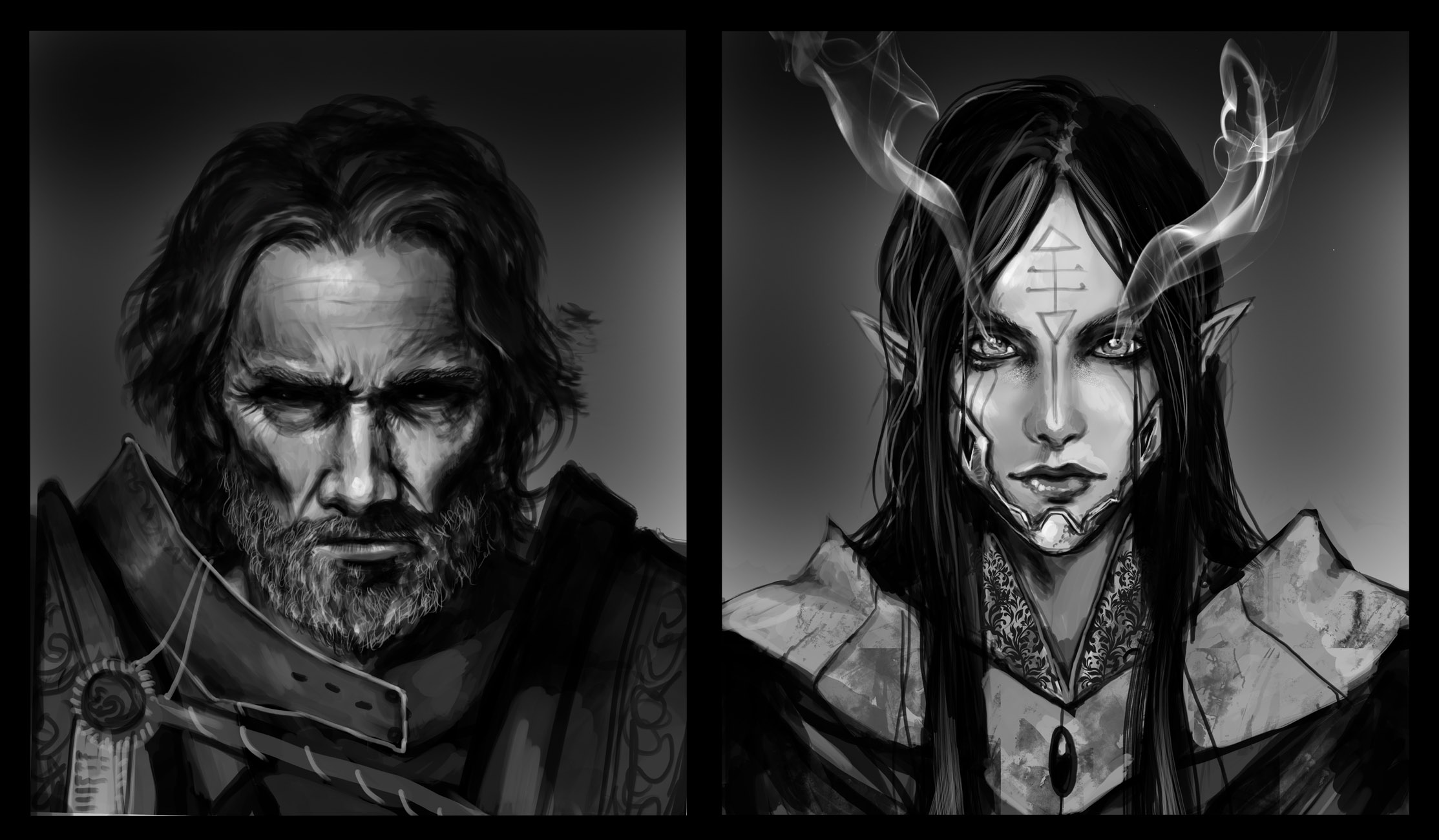
Craftworld Eldar
Not all of the Eldar who remained on their homeworlds succumbed to Slaanesh’s seduction in the run-up to the Fall. Many survived, fighting to save their species from extinction. Because the Aeldari were unable to do so, several of the best Seers saw glimpses of the impending darkness and embarked on a massive endeavor to save their people. For each Eldar homeworld, a colossal ship was built, made from Wraithbone and roughly the size of a planetoid. All that could be salvaged, including the last uncorrupted humans from each world, works of art, plant life, and animals, were carried onboard these ships. The final Eldar Exodus began in these Craftworlds (as the Aeldari became known), and it happened just in time. Most Craftworlds were annihilated by the mental shockwave, while others were dragged into orbit around the Eye of Terror. The rest float across space, their exact number unknown due to difficult and sporadic contact. There are a few Craftworlds that are very well-known:
- Alaitoc — The Alaitoc Craftworld is located far out on the galaxy’s outskirts, on the edge of uncharted space. The Alaitoc Eldar, more than any other Craftworld Eldar, are fanatical in their defense against Slaanesh’s touch. For these two reasons, many of its residents will elect to escape the ship’s stringent boundaries and go off on their own or in small groups at some point. Aeldari will, however, return in times of need, and all Alaitoc armies will contain a significant number of scouts and rangers.
- Altansar — Long considered to have been lost in the Eye of Terror with the Eldar homeworlds, Altansar was a minor Craftworld on the edge of the shockwave. However, stories of its observation and perhaps active participation in the current assault against the Eye of Terror have raised doubts about its fate.
- Biel-tan, the most martial of the Craftworlds, has decided to re-forge the Eldar Empire. Its forces have the largest percentages of elite troops of any Craftworld, with little of the standard citizen-militia that most worlds use in times of war. The Swordwind are their highly trained forces, and the Aeldari are at constant war to help of Exodite worlds.
- Iyanden – Of all the remaining ships, the Iyanden Craftworld was once one of the largest and most prosperous. However, its route led it into the path of the Tyranid invasion, and the Craftworld was nearly destroyed in the wars that followed. Many of the parts are still in ruins today, and the population is dispersed. This causes Iyanden to frequently call upon its fallen, summoning even more Wraithguard and Wraithlords than usual to assist its depleting troops in battle.
- Saim-Hann – One of the more barbarous and wild of the bigger Craftworlds, Saim-warriors Hann’s prefer quick strikes and fast-paced conflicts. It often organizes its soldiers into Wild Riders, or skimmers and jetbikes, and is recognized for the speed and ferocity of its attacks.
- Ulthwé – One of the largest Craftworlds, Ulthwé became entangled in the Eye of Terror’s gravitational attraction and now orbits it. As a result, it is constantly threatened by Chaos marauders and has acted as a fortress against the evil forces for thousands of years. The Craftworld’s residents have become hardened as a result of the ongoing battle and threat of attack, and it maintains a standing militia force known as the Black Guardians. Because of its proximity to the Eye, it has an unusually high number of psychics.
The Craftworlds undoubtedly make up the majority of the Eldar that have survived, though it’s impossible to determine how many there are. Aeldari are unquestionably the center of Eldar industry, technology, and culture, as Aeldari house the only relics of their former worlds. Most Craftworlds include specific biodomes that preserve plants and creatures from their original world, which are meticulously maintained.
Although each Craftworld acts and governs independently, Aeldari will normally offer and accept assistance and guidance from one another. Although it is uncommon, disagreements between Craftworlds can sometimes lead to battles on the battlefield, albeit this is always a last choice.
Every Craftworld has an Infinity Circuit, which is effectively the Craftworld’s Wraithbone skeleton. The souls of all the Craftworld’s dead reside in this matrix in a type of collective awareness, supplying the ship with both psychic strength and a large ancestral mind to advise and guide the living.
The Infinity Circuit has been the Eldar’s closest approach to an afterlife since the birth of Slaanesh; if their souls are not caught and merged into it, Aeldari will be lost in the Warp and consumed by the Great Enemy. As a result, the Eldar will defend their Craftworlds with an almost unrivaled passion and tenacity; Aeldari risk losing not just their home, but also the souls of their ancestors.
Exodites
Before the Fall and the formation of the Great Enemy, the Exodites were a huge group of Eldar that abandoned their homeworlds. Aeldari advocated against Eldar society’s changes, but were either disregarded or dismissed as narrow-minded.
As a result, Aeldari were free of the Chaos taint and established colonies on the outskirts of the galaxy, far from their homeworlds and the now-expanded Eye of Terror. Many of the Craftworld Eldar scorn them for reverting to a more agricultural way of existence, despite the fact that Aeldari have preserved a certain level of technology.
Aeldari are also a more accepting people, accepting Eldar Outcasts where Craftworld Eldar would reject them. Aeldari are primarily supported by Biel-tan and are frequently defended by the Craftworld’s military.
Harlequins
Harlequins are devotees of the Eldar god the Great Harlequin (also known as Cegorach or “The Laughing God”), who was the only Eldar god to survive the Fall. Harlequeins execute magnificent mime and acrobatic exhibitions throughout the Webway, presenting the many unusual and wondrous stories of the Eldar past, as well as the dark and dangerous acts of the Fall.
Harlequins are not only the laughing god, but also deadly fighters. Harlequins will appear to fight alongside their Eldar kin, especially in close combat. Their primary mission, however, has been to protect the Black Library of Chaos from invaders since its establishment thousands of years ago. Harlequins rarely communicate with members outside of their group, but if invaders overwhelm them, Harlequins will call for assistance.
Outcasts and Pirates
Eldar outcasts and pirates are ill-defined, encompassing not just true outcasts, pirates, and raiders, but also long-range Craftworld fleets and various groups of Harlequins and Dark Eldar who have been misidentified.
Piracy is frowned upon by Craftworld Eldar, yet some Eldar will leave their Craftworld for a brief time to experience life outside of the tight rule put in place to combat the Great Enemy. Most people, however, eventually revert to their regimented and tight lives. Some Eldar, on the other hand, are pushed into piracy and exile as a result of their own acts, such as those who refuse to observe the Craftworld’s stringent standards.
These Aeldari frequently band together and hire themselves out as mercenaries to human worlds and leaders. Some pirates, on the other hand, are less honorable and commit the sins that led to the Fall in the first place.
These Aeldari are usually irritable and unstable, traits that are usually hidden while on a Craftworld. Due of their dangerously unrestrained minds, which may draw predators and daemons to lodge in the Craftworld’s Wraithbone structure, these Aeldari are frequently denied admission to Craftworlds, or are only granted access for a short time. These Aeldari may also entice novice Eldar on Craftworlds with fantasies of a glamorous and daring existence.

Ynnari
The Ynnari are a new Eldar sect distinct from the others. These Ynnari aim to eradicate Chaos as worshippers of Ynnead, the freshly awakened Eldar God.
Chaos Eldar
Chaos Eldar are incredibly rare, and their race is by far the most cursed. These Aeldari are ignored and forgotten by their kin, their souls perpetually barred from peace, completely at the mercy of their Chaos masters to prevent their souls from being eaten by Slaanesh.
The Eldar Genders
Eldar sexes appear to be cognitively and physically fairly similar as a race. It can be difficult to tell the sexes apart in such an androgynous race. Eldar females, like their male counterparts, can rise to any rank in society and become soldiers, pilots, or powerful psykers.
The Eldar Paths
On board the Craftworlds, the Eldar have undergone a full societal reform. Every Eldar picks and follows a route, akin to a profession, until mastery of it is achieved. Then he chooses another, and the procedure starts all over again. There are an unknowable number of routes, all of which are perilous to Eldar; an Eldar can get so engrossed in his road that he never leaves it.
Notable Aeldari
- Farseer Eldrad Ulthran — Late of Craftworld Ulthwé
- Yvraine — Emissary of Ynnead
- Prince Yriel — Autarch of Craftworld Iyanden
- Phoenix Lord Asurmen — The Hand of Asuryan
- Phoenix Lord Jain Zar — The Storm of Silence
- Phoenix Lord Baharroth — The Cry of the Wind
- Phoenix Lord Karandras — The Shadow Hunter
- Phoenix Lord Fuegan — The Burning Lance
- Phoenix Lord Maugan Ra — The Harvester of Souls
- Phoenix Lord Irillyth — The Shade of Twilight
- Farseer Macha — Craftworld Biel-tan
- Farseer Taldeer — Craftworld Ulthwé
- Farseer Caerys — Craftworld Ulthwé
- Farseer Idranel — Craftworld Ulthwé
- Farseer Kelmon — Craftworld Iyanden
- Spiritseer Iyanna Arienal — Craftworld Iyanden
- Autarch Slau Dha — Member of the Cabal
- Autarch Kayleth — of Craftworld Alaitoc
- Ranger Illic Nightspear — Craftworld Alaitoc
Etymology and Inspiration
The word “Eldar” comes from J.R.R. Tolkien’s elves, who were known as “the Eldar” in their own language. The Eldar in Warhammer 40,000 have a history that closely resembles that of Tolkien’s elves, to the point that the Aeldari are a “dwindling race” in the game universe, just as the elves were in Middle-Third earth’s Age. In fact, the term “Eldar” has been patented by GW.
Aspects of the Eldar are based on real-world historical civilisations such as Ancient Egypt, Celtic civilisations, and Greek civilisations. Eldar culture and feudal Japan’s culture, particularly the Samurai, have many connections. “War is an art to the Eldar,” for example, it is stated. The “Path of the Eldar,” similar to the “Way of the Samurai” (i.e. Bushido), and the employment of Shuriken weaponry are discussed by White Dwarf. Khaine, the god of murder, is a Hindu goddess who is similar to Kali. The designers most likely tried to give the Eldar the appearance of an ancient civilization.
Aeldari Mythology (or the Aeldari Myth Cycles) is an ancient cultural force that links the Aeldari race’s surviving individuals together and serves as the foundation for much of their thinking about their past.
